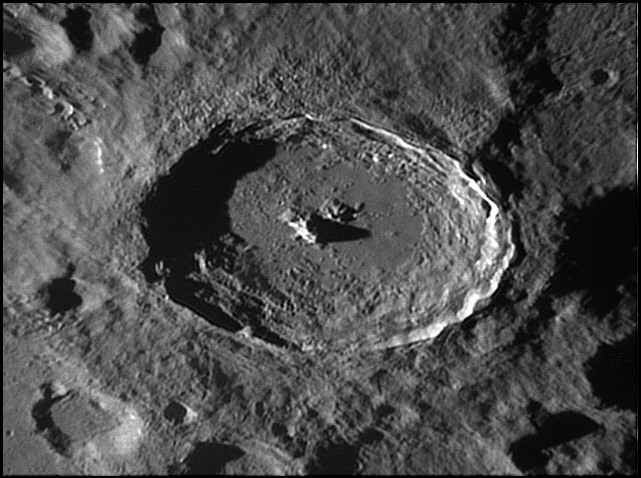
image by Damian Peach
We see the craters, but mostly have no idea of the projectiles whose impact made them. Last week at the Division of Planetary Science meeting in Orlando, Bill Bottke identified the likely asteroidal fragments that formed Tycho on the Moon and Chicxulub on the Earth. Bottke started by looking for a reason for the documented higher rate of impact cratering on the Earth over the last 100 million years (my). He figured that a major collision in the asteroid belt could have spawned fragments that ultimately entered the inner solar system and collided with terrestrial planets. A common result of a collision is creation of a family of asteroids that have similar compositions and orbital elements. If the elements are very similar, mathematical models allow estimating the age of breakup. Bottke suggests that the Baptistina asteroid family formed by collision 160 +/- 20 my ago, and that slow dynamical processes evolved one fragment into an orbit that smashed it into the Moon 109 my ago, forming Tycho, and another fragment hit Earth 65 my ago, creating Chicxulub, whose formation led to the demise of the dinosaurs and many other species. The Baptistina family parent is estimated to have had a carbonaceous chondrite body about 160 km in diameter. Someday when we sample Tycho’s impact melts, seen here on the crater’s floor, we may be able to find trace amounts of the projectile’s material and confirm if it was a carbonaceous chondrite.
Technical Details:
2006/04/20. C14 @ F41. LU075M
Related Links:
Rükl chart 64
Damian’s website
Yesterday's LPOD: 6 Degrees of Separation
Tomorrow's LPOD: North of the Pole
COMMENTS?
Register, Log in, and join in the comments.



